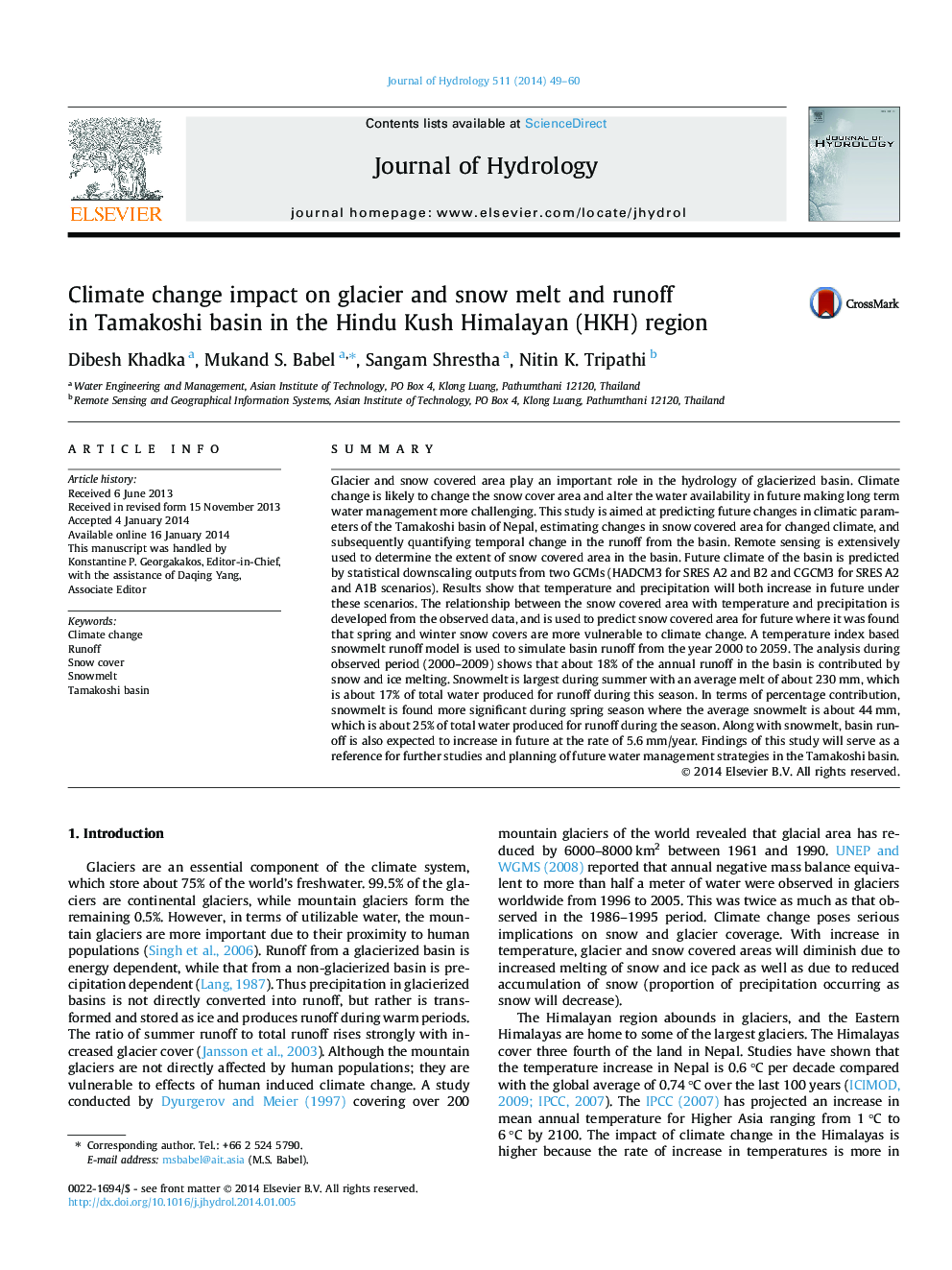| کد مقاله | کد نشریه | سال انتشار | مقاله انگلیسی | نسخه تمام متن |
|---|---|---|---|---|
| 6413271 | 1629937 | 2014 | 12 صفحه PDF | دانلود رایگان |

- We analyzed snow cover area in the Tamakoshi basin using MODIS snow product.
- HADCM3 suggests temperature and precipitation in the basin will increase in future.
- Drastic reduction in snow cover area in future is not expected.
- Basin runoff is dominated by the monsoon precipitation.
- Runoff in the basin will increase at the rate of 5.5Â mm/year.
SummaryGlacier and snow covered area play an important role in the hydrology of glacierized basin. Climate change is likely to change the snow cover area and alter the water availability in future making long term water management more challenging. This study is aimed at predicting future changes in climatic parameters of the Tamakoshi basin of Nepal, estimating changes in snow covered area for changed climate, and subsequently quantifying temporal change in the runoff from the basin. Remote sensing is extensively used to determine the extent of snow covered area in the basin. Future climate of the basin is predicted by statistical downscaling outputs from two GCMs (HADCM3 for SRES A2 and B2 and CGCM3 for SRES A2 and A1B scenarios). Results show that temperature and precipitation will both increase in future under these scenarios. The relationship between the snow covered area with temperature and precipitation is developed from the observed data, and is used to predict snow covered area for future where it was found that spring and winter snow covers are more vulnerable to climate change. A temperature index based snowmelt runoff model is used to simulate basin runoff from the year 2000 to 2059. The analysis during observed period (2000-2009) shows that about 18% of the annual runoff in the basin is contributed by snow and ice melting. Snowmelt is largest during summer with an average melt of about 230Â mm, which is about 17% of total water produced for runoff during this season. In terms of percentage contribution, snowmelt is found more significant during spring season where the average snowmelt is about 44Â mm, which is about 25% of total water produced for runoff during the season. Along with snowmelt, basin runoff is also expected to increase in future at the rate of 5.6Â mm/year. Findings of this study will serve as a reference for further studies and planning of future water management strategies in the Tamakoshi basin.
Journal: Journal of Hydrology - Volume 511, 16 April 2014, Pages 49-60